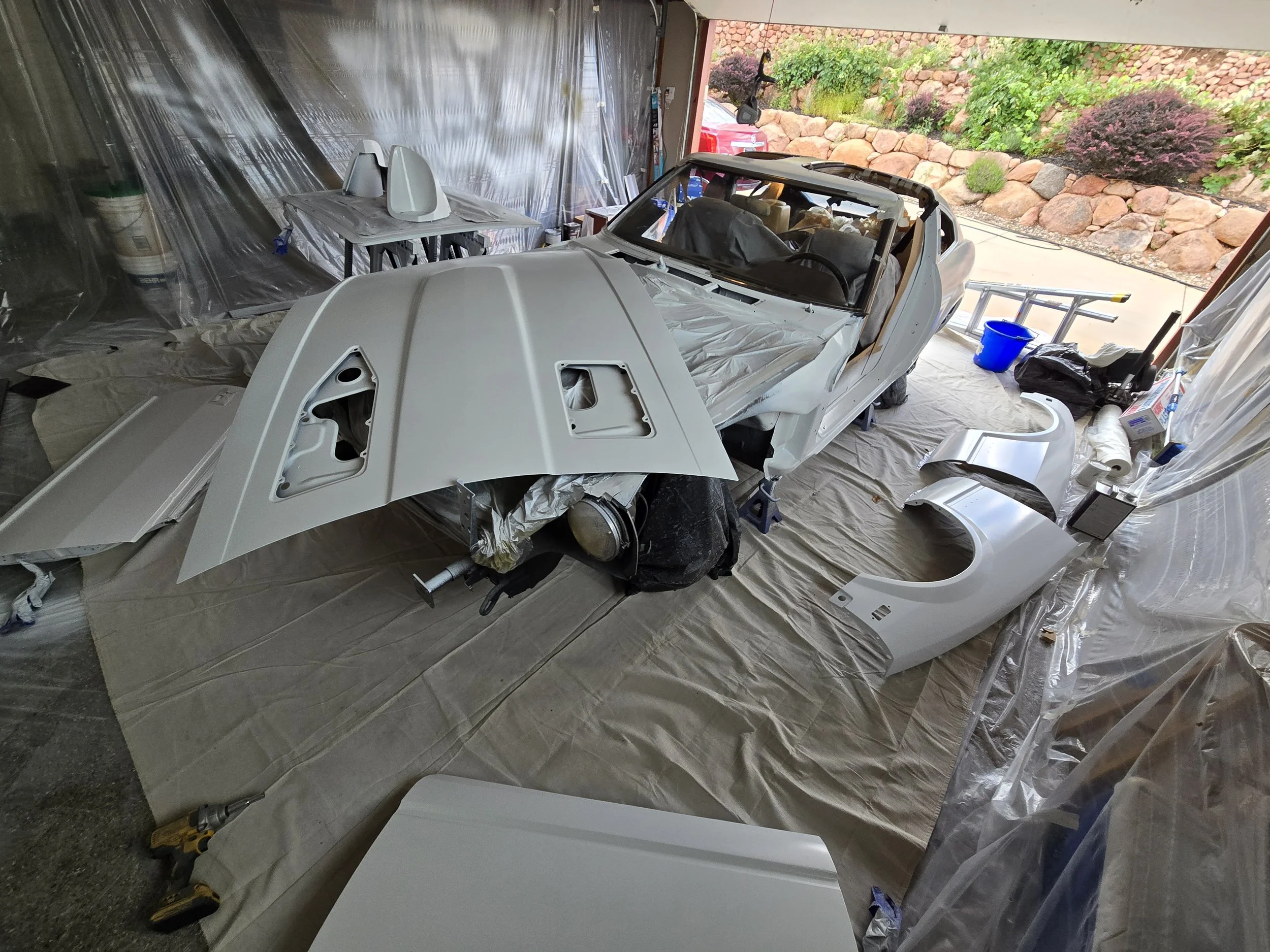Full Vehicle Respray
After discovering severe sun damage and rust on the original paint, I embarked on a full respray in a candy-red finish over a black base emulating Mazda’s premium finish with a cost-effective “candy paint” technique. Preparations included complete panel stripping to bare metal, hole welding (for mirror and antenna delete), self-etching and high-build primers, multiple sanding cycles, and expert father-son painting collaboration. The result: a deep, glossy finish achieved through over four weeks of prep and paint, delivering both restoration quality and emotional growth through perseverance.
Throughout this project, I gained invaluable insights, but the most profound lessons were about patience and the importance of thorough preparation. The extensive and meticulous sanding sessions, often stretching into the early hours, not only shaped the car but also offered me a unique opportunity for introspection.
During those countless nights, as I labored over every inch of the vehicle's surface, I came to appreciate the profound connection between meticulous attention to detail and achieving excellence. This process wasn't just about transforming a car; it was a transformative journey for me as well. I developed a deeper mental resilience and a more spiritual outlook on both my craft and life itself.
I emerged from this experience with a reinforced belief in the value of perseverance and the importance of a well-considered approach. These lessons have reshaped my approach to challenges, encouraging a more thoughtful and patient demeanor. This project was not only a labor of love but a pivotal chapter in my personal growth.
Paint Removal
The Details
The Culmination
When I first purchased my vehicle, I harbored a dream of owning a deep cherry red sports car. However, it quickly became apparent that the existing paint was severely sun-damaged, with rust spots beginning to emerge. Recognizing the need to act swiftly, I decided to undertake a respray to preserve the car's condition for the future.
Inspiration struck when I encountered the stunning Mazda Soul Red Crystal paint. Despite its appeal, the cost of the authentic paint was prohibitive. Instead, I opted for a candy paint solution, which involves applying a base color topped with a semi-transparent, tinted paint to achieve rich depth and luster. I chose a black base beneath a bright red candy coat to emulate the iconic Mazda color.
The preparation process was extensive. We began by removing all trim components and glass, except for the windshield and rear glass. The car was stripped to bare metal using a combination of abrasives and chemical solvents. I found that the solvents were unable to penetrate through the factory clear coat, so abrasives were used to remove as much of the top layer as possible. I also welded shut the holes for the door mirrors and antenna as I chose not to run an FM radio and preferred the aesthetics of fender mirrors. I uncovered and later addressed body damage with body filler.
A self-etching primer was applied first, followed by several layers of high-build primer. These layers were meticulously sanded down to ensure the panels were perfectly smooth. After three weeks of diligent preparation, which included several days devoted to masking off the engine bay and interior, the car was ready for painting. The painting process started with the door jambs, undersides of the fenders, doors, hood, and hatch. Once these parts were painted and had cured, we reassembled the car.
The exterior painting then commenced with two layers of black, followed by four layers of candy paint, and concluded with two layers of clear coat. Throughout this process, I was fortunate to have the guidance of my father, who owns a painting company and has extensive experience with spray painting machinery. His expertise was invaluable, ensuring a finish that far exceeded my expectations.














